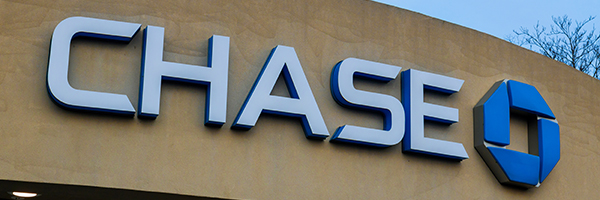
Saturday Night Quarterback (on a Sunday) says, For the week ahead expect…
This week I expect the March lull before the April storm.

This week I expect the March lull before the April storm.

I expect another meandering week as the market waits on Friday’s jobs report for December and the beginning of earnings season on January 15.

It’s still very early in third quarter earnings season, but I think we can already see a pattern.

I expect a transition from a market dominated by speculation about the pace of interest rate cuts by the Federal Reserve to worries about earnings and the growth rate for corporate profits.

With a Federal Reserve interest rate cut now not looking likely until December, earnings are the only game in town when it comes to supporting this market. Or moving stocks higher. So far earnings have come through with surprises running slightly above the 10-year average. But it looks like the quarter is still on a path for a very modest 3.5% growth in earnings for the Standard & Poor’s 500.

Today’s video is NOW I’m Worried About Stocks. Investors and analysts have shown a willingness to pay for vapor in the last couple of days. The market reaction to two companies, Tesla (TSLA) and Apple (AAPL), has made this clear me.. Tesla’s earnings were terrible at $0.45 a share, below the expectations of $0.52 and revenue was down 50% year over year. However, the stock was up the day after earnings thanks to expert spin from CEO Elon Musk. He announced that Tesla will move ahead with the Robotaxis and full self-driving cars but it will also advance plans to produce a $25,000 car to enter the lower end of the market and compete with China. Although the company previously waffled on offering a more affordable Tesla, Musk was now suggesting it may be available at the end of 2024 or early 2025. When asked for more specifics, Musk declined to offer a definitive date on any of these promises. Wall Street ate it up and jumped on the spin that Tesla will be selling a more affordable vehicle “soon.” At this point, these are totally imaginary revenues from a car that has no release date and a full self-driving technology that doesn’t fully exist yet, and investors are saying they’re willing to pay for it? What worries me here is that in the market paying for spin has become normal because stocks go up on spin. Even if the product is “vapor,” investors are willing to get in on the stock bump associated with the announcement of imagined prospects. Similarly, Bank of America recently predicted Apple (APPL) is going to go up 36% soon because the company will announce its plans for adding AI into the iPhone. This is speculation on an announcement, not of the product itself, but on the prospect of an announcement. Bank of America is likely right on this, but I’m not willing to pay up for this speculative announcement without a tangible product or date and it concerns me that the market IS willing to do that. I understand the spins and the anticipation but the reaction and willingness to buy on vapors isn’t a sign of a healthy market.

All good things come to an end. After seven straight quarters of record levels of profits from net interest income, the spread between what earns by lending and what it pays depositors to raise funds, JPMorgan Chase (JPM) reported that net interest income slightly missed analyst estimates for the first quarter. The quarter the company reported today certainly wasn’t a disaster. The bank earned $23.1 billion in net interest income in the period, up 11% from the first quarter of 2023. But the end of the beat and raise guidance of the last year and a half plus an increase in costs were enough to lead to substantial selling today, April 12. The shares finished the day down 6.47% at $182.79. Analysts and investors were clearly hoping for more.

If, as the too hot April 10 CPI inflation argues, we’re not going to see a June 12 interest rate cut… And if investors are looking at two cuts in 2024 (at the most) instead of three… And if there’s a possibility that we won’t see the first rate cut until the November 7 Fed meeting… Then what will keep this rally from turning into a correction? Earnings look like they will have to do the job .Problem is that this quarter’s earnings look likely to disappoint. There are quarters with better earning growth forecast ahead. Will investors wait for them?

This week I expect the market to put its obsession with the Federal Reserve, inflation, and interest rates on hold, and switch to watching earnings reports for the first quarter of 2024. The first batch of earnings–the Big Banks JPMorgan Chase (JPM), Citigroup (C), and Wells Fargo (WFC)–hits the wires on Friday, April 12–with Netflix (NFLX) to begin tech/momentum earnings reports on Tuesday, April 18. I think it would be an overstatement to say that the quarter’s earnings reports are make or break for this rally–the economic news is just too strong and interest rate cuts loom out there somewhere even if no one can say just when. But this quarter will provide an important data point in the “Stocks have climbed too far, too fast” vs. “This rally can run higher on a strong economy” debate. And the first set of high-profile earnings looks likely to throw some cold water on the most fevered market optimists.

I expect a relatively boring, week. With no fireworks from the Federal Reserve. Almost no economic data. No jobs surprises. And no earnings news from the Magnificent Sever stocks. Just old fashioned block and tackling to see if any other stocks can join the Momentum Parade.

Like every season of earnings reports, this one will be chock full of real earnings news and will come complete with strenuous efforts at gaming those real results. Three big questions for the week-and for earnings season. First, question: How much “bad news” has been already discounted by analyst cuts to earnings expectations?

Earnings season for the fourth quarter of 2023 begins on Friday, January 12 with reports from the big banks JPMorgan Chase (JPM), Wells Fargo (WFC), Citigroup (C), and Bank of America (BAC). Which means that earnings season is going start off with a dull thud. More than 70% of the Standard & Poor’s 500 companies that are scheduled to report earnings for the fourth quarter over the next few weeks are banks and the banking segment of the the financial sector in the index is projected by Wall Street analysts to show a 21% year over year decline in earnings